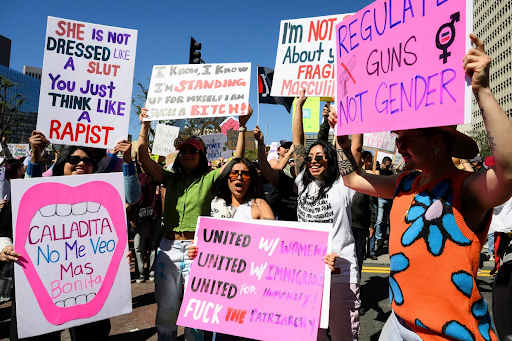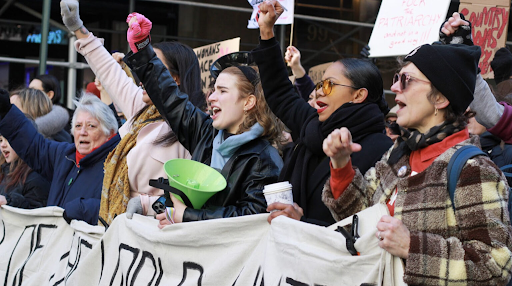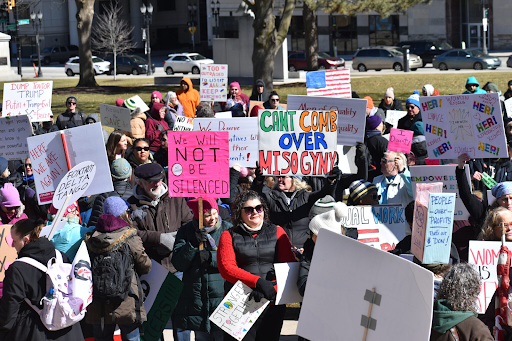On March 8, 2025, thousands of protestors from across the country took to the streets to rally for Women’s Rights.
Supporters of the movement emphasized the importance of gender equality, reproductive rights, and workplace fairness, while others criticized aspects of the protests as overly political. The marches also included opposition to policies from the Trump administration, sparking debate about the role of politics in the fight for gender equity.
In cities from New York to LA, marchers carried signs advocating for equal pay, workplace protections, and access to healthcare. Organizers stressed that the demonstrations were not about past injustices, but building an inclusive future.
“Are we going to be silent? Be silent? No. The fight is here. Say the fight is here. The fight is now,” Comm’r. of the Metropolitan Water Reclamation District of Greater Chicago, Precious Brady-Davis, said (WGN9)
In Michigan, a rally outside the Midland County Courthouse featured speeches from local leaders, activists, and elected officials. The event, called “Unite and Resist,” encouraged attendees to stay engaged in politics and advocate for policies that support women’s rights.
While many demonstrators focused on broader gender equality issues, some protests included vocal opposition to President Trump and his administration policies. They protested against abortion restriction, changes to Title IX protections, and the appointment of Elon Musk and DOGE (Department of Government Efficiency).
At the same time, supporters of Trump pushed back, arguing that his economic policies benefited women by lowering unemployment rates and increasing entrepreneurship opportunities. Some conservative voices also emphasized that discussions on gender equality should remain separate from partisan politics.
Beyond the U.S., similar protests took place worldwide. In Latin America, marches focused on issues like gender based violence and the role of far-right politics in shaping policies affecting women. Demonstrators in Argentina and Chile called for greater government action to address violence against women, while Peruvian activists protested potential cuts to women’s social programs.
In Mexico, the marches were marked by both peaceful demonstrations and incidents of vandalism, as some protesters targeted churches and government buildings. While most participants advocated for peaceful action, the damage led to backlash from religious and conservative groups, calling for respect and dialogue.
Italy marked international women’s day with marches held in 60 cities. The largest demonstration took place in Rome, where participants focused on combating gender based violence and addressing the persistent gender gap. Coinciding with these demonstrations, the Italian government approved a draft law introducing the legal definition of “Femicide” into the country’s criminal code, punishable by life in prison.
Meanwhile, in Scotland, first minister Nicola Sturgeon faced opposition from gender activists at an international Women’s day event. Protestors criticized policies relating to gender identity, reflecting ongoing debates over Women’s rights and transgender inclusion.
Whether advocating for reproductive rights, workplace equality, or broader social justice issues, the marches made one thing clear; the discussion on women’s rights is far from over, and it will continue to shape political and cultural debates in the years ahead.



